Clothing designed for chairs by Bernotat & Co
Dutch designers Bernotat & Co have created a range of coverings for chairs that are modelled on a grandma's dressing gown, baggy overalls and an oven mitt.
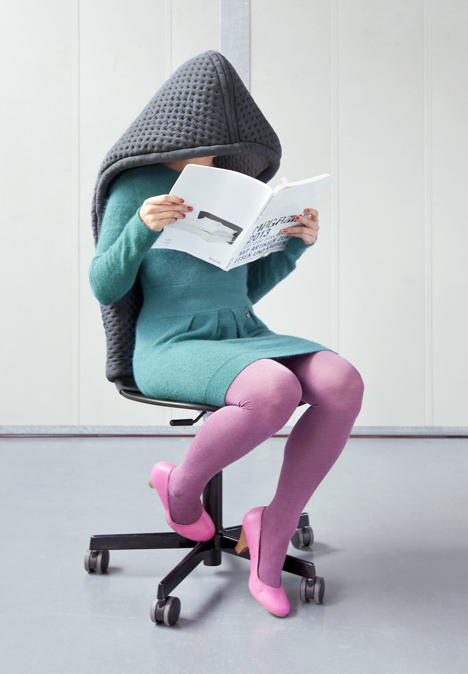
Dutch designers Bernotat & Co developed the concept for people to recycle old chairs and make them more comfortable to sit on.
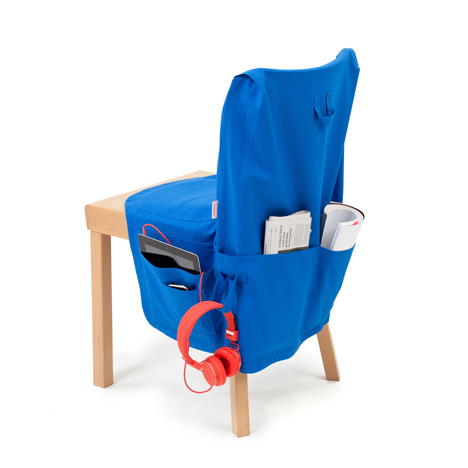
"Being slightly strange, some of them maybe even awkward, they trigger emotional reactions," said the designers. "People relate differently to the chairs when they're dressed up and the chairs suddenly acquire a certain anthropomorphic quality."
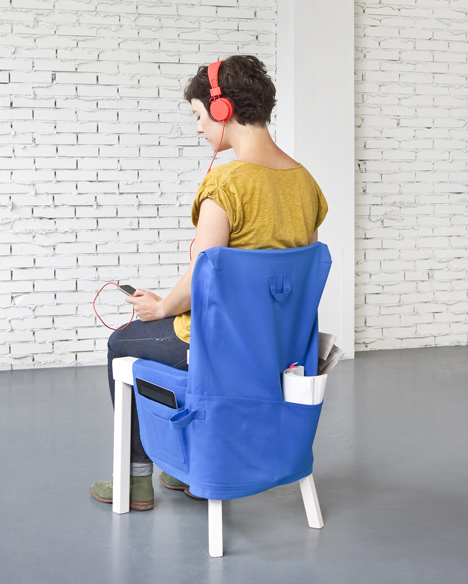
The newest piece of the chair clothing, Big Baggy, is made from heavy duty canvas used in overalls and work wear. The back features two big pockets for newspapers, books and magazines, while the side pockets have space for stationary, iPads, iPhones and a hanging loop for headphones.
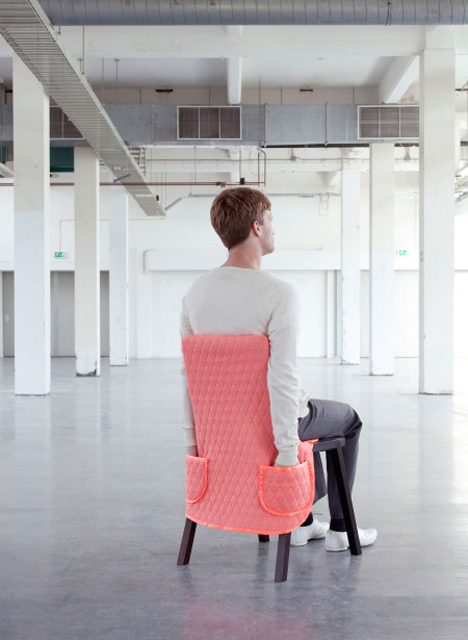
Pique Pocket is made from a quilted fabric similar to that of an oven mitt and slips over the back of a chair, tucking in at the sides like an apron. Users can slips their hands into the large pockets that hang down behind when they are seated.
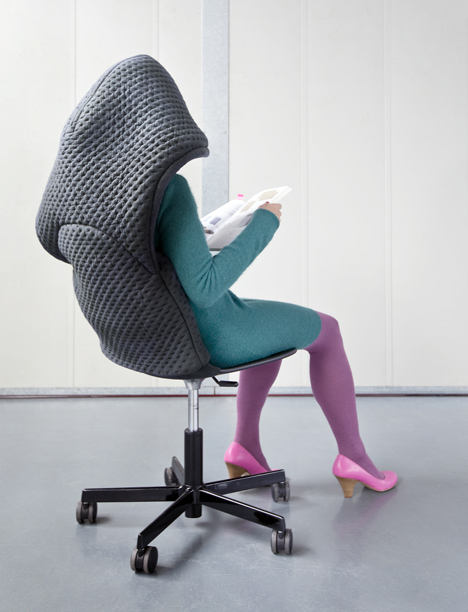
Hoodini features a multifunctional cover with a hood attached that can be slipped over a person, completely obscuring their head from view or used as a storage space when it hangs behind the chair.
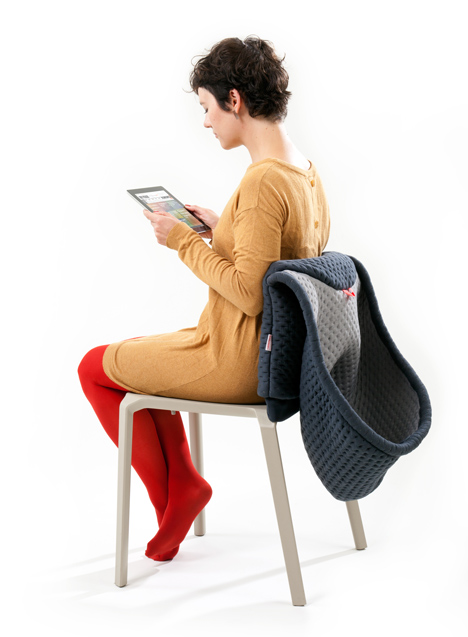
The quilted fabric is reminiscent of a grandma's dressing gown or a Chesterfield sofa.
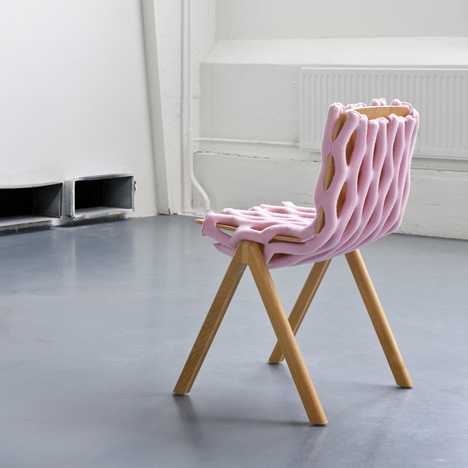
The foam packing for apples inspired the designers to create the Knit-Net design, a stretchy slip-on cover made from acrylic and wool filled with foam. Four press studs help secure it in place at the base of the seat.
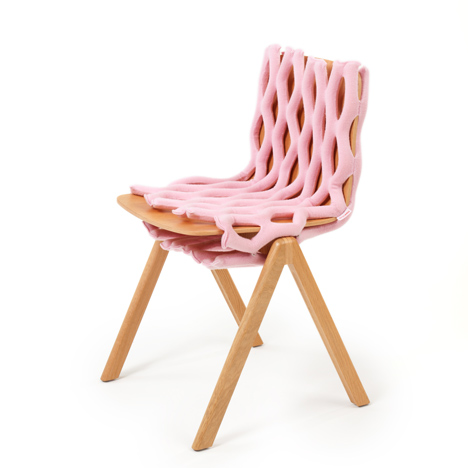
The Chair Wear Prét-á-Porter Collection is a selection of their favourite designs from the Haute Couture Collection, presented at Milan and Dutch Design Week last year. The designers have since introduced new colours and one new design.
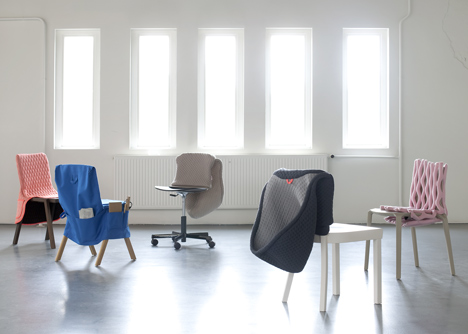
Here's a some more information from Bernotat & Co:
Chair Wear
Chair Wear started as a mildly ironical joke, and ended up in a very inspiring new way of looking at furniture upholstery, of seeing it as a separate item, leading to new constructions, productions techniques and materials. With a real collection as a result.
The idea of dressing up chairs evolved while working on the Triennial Chair for Gispen. This chair has a separate cushion in the back, which allows it to be upholstered in two different kinds of fabrics, in endless combinations. With Chair Wear, the idea is taken even further: Bernotat&Co looked at upholstery as a separate item, as clothing for chairs, specially designed and custom-made for this purpose.
Chair Wear stimulates re-use by upgrading old furniture. But the aim is not just restyling. Instead, Bernotat&Co researched the possibilities of adding comfort to hard wooden chairs, or of creating additional functions for simple chairs. For this purpose, the chairs are dressed up with unexpected textiles, ranging from high-tech to industrial to traditional.
For our 'Prêt-à-Porter models', we used a variety of techniques and materials, like we did in the initial 'Haute Couture collection': Three-dimensional knit-and-wear for Knit Net, the innovative 3d knitted textiles from Innofa for Pique Pocket and Hoodini, and for Big Baggy we used heavy duty canvas that is normally used in overalls and work wear. All of them provide a soft contrast to the hard, basic chairs forming the framework.
In addition, the Chair Wear models give a nice twist to the rather tacky subject of chair covers. As ambiguous objects with various sources of inspiration, they're open to associations. Being slightly strange, some of them maybe even awkward, they trigger emotional reactions. People relate differently to the chairs when they're dressed-up, and the chairs suddenly acquire a certain antropomorphic quality. After all, the Dutch word for upholstery is 'bekleding' – its root including the word 'clothing', creating a direct relation to the human body.